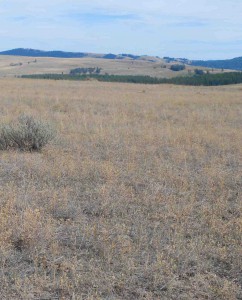Stephens, AEA, PG Krannitz and JH Myers. 2009. Plant community changes after the reduction of an invasive rangeland weed, diffuse knapweed, Centaurea diffusa. Biological Control 51: 140-146.
Abstract: The expected outcome of weed control in natural systems is that the decline of a dominant weed will result in an increase in diversity of the plant community but this has seldom been tested. Here we evaluate the response of the plant community following the decline of diffuse knapweed (Centaurea diffusa) in six different pastures at White Lake, BC, Canada over five years. This period followed the establishment, spread and high levels of attack by the introduced European weevil, Larinus minutus, as part of a biological control program. Knapweed declined immediately before and during the study period, but, contrary to expectations, the species richness and diversity of the rangeland plant community did not increase. The absolute cover of native and introduced forbs and grasses increased following knapweed decline, but only the introduced grasses showed a consistent increase in cover relative to the other life-forms. However, unlike in other studies, the native plants dominated the study site. We conclude that the changes in plant communities following successful biological control are variable among programs and that the impact of replacement species must be evaluated in assessing the success of ecological restoration programs that use biological control to manage an undesirable weed.

